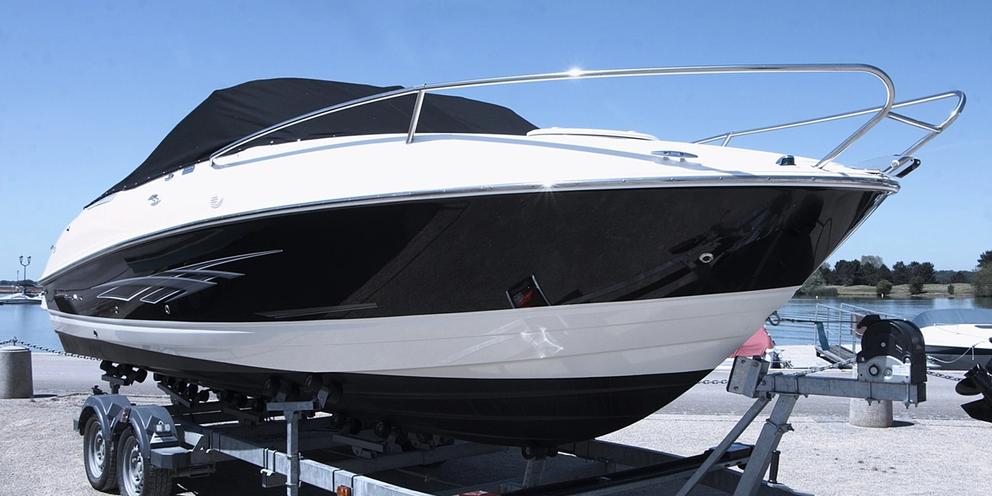
Winterizing Your Boat: A Simple Step-by-Step Guide
Image Credit: luctheo / Pixaby
Summer is over and the days are once again growing shorter and colder. For many of us, the leaves changing not only signals the arrival of fall, but also the painful task of placing our boats in storage for the frosty months ahead. Entombed in their tarps, boats are sadly at the highest risk of water damage during the winter, when frozen moisture can cause corrosion, breakages, and thousands of dollars in damage. While none of us relish seeing our vessels captive on dry land, properly winterizing your boat is the most effective way to prevent its winter berth from becoming its grave. Not only will properly winterizing your boat prolong its life, it will give you the peace of mind that when spring comes, you’ll be back out on the water with a minimal amount of repair.
In order to streamline this process, we’ve prepared a simple, no-nonsense step-by-step guide for you to follow while you cozy up your boat for the coming winter.

Step 1. Check your owner’s manual
Before you begin the process of winterizing your boat, it’s important to take the time to consult your owner’s manual. While the below steps are general to any boat (inboards, outboards, and stern-drives), reviewing your boat’s manual will help you determine what to prioritize and what method is best for winterizing your craft.
Steps 2 - 6: Engine Maintenance
The engine is the beating heart of your vessel and should be treated with the appropriate respect. To keep it beating for many seasons to come, it’s essential to properly prepare the engine for a long period of dormancy. In the next five steps, we will cover the what and how of protecting your engine until the snow melts.
Step 2. Treat your fuel
Fuel degrades over time, forming varnish deposits and evaporating into ethanol; both of which are harmful to your boat’s fuel system. By treating your boat’s fuel with a stabilizer, you are helping to prevent those deposits from forming while your boat is stored on the rack. Towards the end of the boating season — about two weeks or so before you lay your boat up — start adding the stabilizer to your boat’s fuel system so it has properly blended.
Don’t worry if your boat is already in storage, as you can still add the stabilizer. After combining it with the fuel in the tank, idle the engine for approximately 10 to 20 minutes to ensure the stabilized fuel has circulated throughout the entire system. Helpful tip: Add the stabilizer to a gas tank first, then thoroughly mix it with the fuel; finally, add it to your boat’s fuel system. This guarantees the stabilizer is completely integrated with the fuel, which lessens the amount of time it takes to diffuse throughout the boat’s system.
Last but not least, don’t forget to top off your fuel tank, as failing to do so allows moisture to creep into it, spelling disaster in spring.
Step 3. Change the oil
Not only does changing the oil keep your engine well-lubricated, it helps prevent condensation from collecting which could ultimately lead to corrosion and (at worst) engine failure. In addition, moisture that accumulates in the engine crankcase or gear crankcase could freeze and expand, causing significant damage to the engine. Helpful tip: Now’s a good time to install a new oil filter too. That way, you know the whole system is set for when you’re ready to take your boat back out in spring.
Step 4. Flush and drain the engine (for inboards, outboards, and stern-drives)
Over the course of the season, gunk collects in the crevices of your engine, weakening its performance and trapping moisture in sediment pockets. Before your boat is laid up, you need to flush all this gunk out of the system and then completely — and we mean completely — dry it out again. Nothing’s worse than uncovering your boat in the spring only to find you didn’t properly dry out your motor and it has rusted or cracked.
Before you begin flushing the engine with water, it’s always good practice to remove the engine cover and check for any damage or corrosion that you may have missed while out on the water. Keep your eye out for frayed wires, loose connections, or chipped paint; and address accordingly if any are found. In addition, now is a good time to check the belts’ tension. If they are loose, make sure to adjust them before you start the flushing process.
Now that you’ve inspected the engine, it’s time to flush it with fresh water to clear out anything that may have become trapped in there over the season. Make sure to open the petcocks underneath your engine’s manifolds, unthread the block drain, and also remove the water-pump hose to allow proper drainage. You want the engine to drain completely, as any water trapped in there over the intervening winter months can freeze, leading to cracking and serious engine damage.
For those with outboard motors, there may be a water hose attachment. If there isn’t, you’ll have to add water directly to the block and manifold by loosening the hoses. Attaching “ear muffs” (essentially rubber cups) to the vents just above the prop is a great way to form a strong seal, ensuring the entire engine system is flooded. Once you’ve added water to the engine block and idled it for a couple of minutes, move your engine to a vertical position to allow all the water to drain out and remove the “ear muffs.” Helpful tip: At this stage, many boat owners make the mistake of calling it a day. However, sediment can form at the bottom of the block, trapping water and causing poor drainage. We recommend inserting a wire directly into the block and manifold drains to loosen up any built up sediment. Do this on both sides and you’ll be amazed at how much extra water you’ll drain!
Inboard and stern-drives should now be filled with antifreeze to prevent ice from forming in the block.
Step 5. Fog the engine
Protecting the internal parts of the engine from corrosion is essential during the winterization process. By “fogging” your engine cylinders, you’re reducing the amount of moisture that can accumulate in them. This accumulated moisture causes surface rust and, if left untreated, leads to a visit from the boat doctor in the spring and a big headache for you.
To fog your engine, pop the air-cleaner off and spray the fogging-solution directly into the carburetor while the engine’s running. Continue spraying the fog-solution until the engine dies. Do this a couple of times to completely lubricate the engine. Don’t worry if the engine won’t start after doing this; it’s flooded with fogging oil, which is what we wanted anyway. Let it rest for a few minutes to ensure everything is properly lubricated.
Step 6. Drain the gear-case lubricant
While draining the gear case, check the color of the liquid. If it’s clear or amber-colored, the gear-case is well lubricated. If it’s milk-colored, there may be water in the oil. If there are little chips of metal flowing out, your gears may be grinding against each other. If you do find milky-fluid, it may be a good idea to replace the seals over the wintertime.
Steps 7 - 9: Internal Maintenance
Your engine isn’t the only part of your boat that needs protection during the harsh winter months. Just like with the engine, now is a great time to go over your boat from stem to stern to check for any cracks or dents in the hull that could allow water to collect and freeze. Fiberglass may protect your boat’s interior from salt water and sun, but it won’t stand up to the regular freezing and thawing that occurs over the winter. Scrape off any barnacles or other detritus that may have attached itself to your hull. A good power wash also goes a long way to extending the life of your boat’s exterior.
Step 7. Drain your boat’s plumbing systems
We’ve said it before and we’ll say it again, leave no water in your boat! This includes heads, sinks, tanks, anywhere water may have accumulated during the season. Once these systems are properly drained, pump them full of antifreeze to protect them and prevent moisture from gathering while your boat lies dormant. Now is also the time to drain any other internal systems your boat may have, including the bilge and raw water washdowns. Helpful tip: Remove your hull drain plug to prevent moisture from building up in the hull.
Step 8. Remove your batteries
While this step is optional, it’s still a good idea to remove and charge your batteries while your boat is in storage. At the very least, disconnect the cables or move the battery to the off setting. Any non-marinized electronics should be brought indoors during the off-season.
Step 9. Cover your boat with a Quality Boat Cover
Your engine is lubricated, your fuel is stabilized, and your internal water systems are drained: sounds like you’re done, right? Wrong! Before your boat is ready to lie motionless for months, it needs to be properly cleaned and covered. Now more than ever, it’s important to wash the deck, vacuum the rugs, and remove anything that could develop mildew. The last thing you want is to remove your quality boat cover in the spring and find a moldy mess waiting for you.
Lastly, cover your boat with a strong, durable boat cover to protect its interior. When doing this, make sure there’s enough ventilation to minimize trapped moisture from accumulating. Regular check-ups on your hibernating vessel are also a good idea; you’ll be able to identify any issues earlier and also make any necessary tweaks. Using the right boat covers will ensure your boat stays protected and in top condition during its hibernation period..
Remember, winterizing your boat doesn’t have to be a source of anxiety. A methodical approach to winterization means less headache for you and less costly repairs in the spring. By following our simple step-by-step guide, you’re ensuring your boat will be just as healthy next year as it was in 2021.
Updated